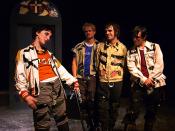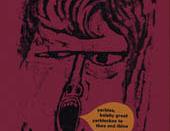I want to explore the concept of "left cycle" films using the article entitled "The Left and Right Cycles" by Robert Ray. To help me explore what makes up a "left cycle" film, I will compare two movies, both "left cycle" according to Ray. Those movies are "Dog Day Afternoon" and "Clockwork Orange". What makes both of these movies "left cycle", and how to they differ within that classification?
First, I think it is important to differentiate between the "left" and "right" movies. What Ray says to this is "the three factors that superficially divided them: the response to the frontier's closing, the characteristics of the hero, and willingness to acknowledge self-consciousness."
As for the first mentioned of the three factors dividing the "left" and "right" films, the "left" view as Ray puts it "insisted that all frontiers, geographical and metaphorical, had disappeared, and with them, the basis for certain lifestyles, institutions, and values premised on the existence of unlimited space."
In Dog Day Afternoon and Clockwork Orange, both films seem to be set in rather urban areas, which in itself gives off that atmospheric feeling of crowded space and limited time. But more importantly, both films show the economic depression within the cities they are set in. This I think goes against the optimism of the open expanse of the frontier and the promising future it represents.
The disappearance of "all frontiers" that "left" films showcase gives a feeling of hopelessness within the lives of the characters in these films, and seems to be the catalyst and reason for their behavior. In Dog Day Afternoon, Sonny, a Vietnam vet, is living in New York City while a major economic depression is occurring. He decides to rob a bank, and as we learn especially through the scene...


